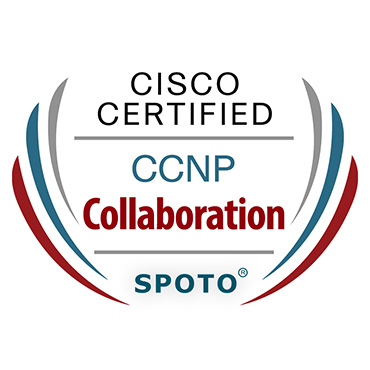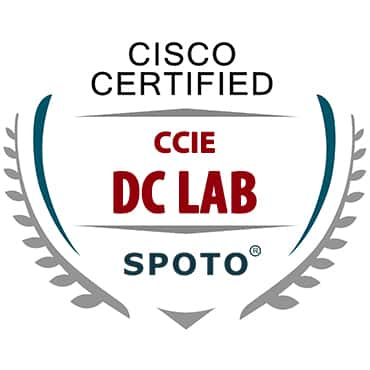PVST is a unique solution for Cisco that handles spanning tree processing on a virtual local area network.
PVST runs a separate spanning-tree instance for each virtual local area network. In general, PVST requires Cisco’s ISL to run on the trunk link between switches.
Each VLAN spanning tree (PVST) maintains a spanning-tree instance for each VLAN configured in the network. It uses ISL trunking and allows a VLAN trunk to forward some VLANS when blocked by other VLANs.
Although PVST treats each VLAN as a separate network, it has the ability (at Layer 2) to load balance communications through some VLANS in the backbone and other VLANS in the different spine that do not cause spanning-tree loops.
In addition to supporting the common spanning tree standards published by IEEE, Cisco has also improved these common spanning tree standards and developed corresponding versions of spanning-tree technologies-PVST, PVST +, Rapid-PVST +. In PVST + and Rapid-PVST + modes, up to 128 spanning-tree instances can be supported.
The original spanning-tree technology was the STP technology released by IEEE in the form of an 802.1D standard. It treats the entire switching network as a spanning tree instance, that is, Common Spanning Tree, a common spanning tree (Cisco calls it “Mono Spanning Tree,” a single spanning tree), requiring that there is no Layer 2 ring in the entire switching network road. In this way, in STP technology, all VLANS in the network share the same spanning-tree instance, and each VLAN uses the 802.1q trunk mode.

More Read: Cisco Fortifies ACI for Amazon, Microsoft Integration and Multicloud Management
The most significant disadvantage of this design is that it cannot implement VLAN interaction engineering through redundant links, that is, if a connection is blocked, all VLAN communication is prevented from passing on it.
To address this shortcoming, Cisco recommends using its own PVST / PVST + spanning tree solution to run an independent spanning-tree instance for each VLAN in the switched network. This solution allows each VLAN to use a different logical topology, which can enable Layer 2 interaction engineering.
However, this solution also brings deficiencies. It said that it had reached the other extreme of the original IEEE 802.1D STP. With the increase in the number of VLANS in the network, the PVST / PVST + solution wastes a lot of switch resources and makes The entire spanning-tree management becomes very complicated (because the number of instances in the network is generally higher than the number of active VLANs in the system). Ultimately it is because there is one spanning-tree instance per VLAN, and there are too many instances.
And after that? IEEE released an improved version of the spanning tree: RSTP (Rapid Spanning Tree Protocol), but in RSTP, IEEE still treats the entire switching network as a spanning-tree instance. Although the layer two convergence speed is improved in more extensive systems, This improvement is not enough to allow free VLAN communication interaction on the redundant link. There will be data loss due to delays in port state transition.
Cisco knew the shortcomings of its per-VLAN spanning-tree solution, so it began to develop a program called MISTP (Multiple Instances Spanning Tree). But soon, it was discovered that IEEE had issued a similar standard, that is, IEEE 802.1s MSTP (Multiple Spanning Trees Protocol, multiple spanning tree protocol).
Because the functions of the two are almost the same, to avoid confusion in terms and some small differences in features, Cisco finally announced the direct equivalent of adopting IEEE 802.1s MSTP.
The earliest version of the spanning tree protocol developed by Cisco itself is PVST (Per-VLAN Spanning Tree, per VLAN spanning tree) corresponding to the IEEE 802.1D standard STP technology. As can be seen from its name, it no longer treats the entire switching network as a spanning tree instance like STP, but as a spanning tree for each VLAN.
In the IEEE 802.1D standard STP scheme, it only defines a CST (Common Spanning Tree). It is assumed that there is only one spanning-tree instance in the entire bridged network, which requires the whole system to be loop-free.
In PVST, each VLAN has a spanning-tree instance, as long as there is no loop inside each VLAN, regardless of other VLAN topologies. It is the most significant difference between it and IEEE 802.1D STP.
The VLAN trunking in PVST uses ISL. The format of PVST BPDU and STP / RSTP BPDU form is different. The destination address of the transmission is changed to Cisco reserved address 01-00-0C-CC-CC-CD. In the case of trunking, PVST BPDUs are tagged with ISL VLAN tags. Therefore, the PVST protocol is not compatible with STP / RSTP protocol.
Compare CST, PVST, PVST + several spanning-tree technologies to distinguish their relationship.
CST becomes a common spanning tree. When the spanning-tree converges, regardless of the existence of VLANS in the network, only a single spanning tree is generated and maintained in the system; another thing to note is: all CST BPDUs are untagged Transmit via local VLAN.
Disadvantages
1.The STP in the network cannot create the optimal STP path for the VLAN according to the VLAN’s individual needs, which may result in sub-optimal ways in some VLANs.
2. After the redundant ports are blocked, the data cannot be forwarded in each VLAN, which will result in the inability to load balance the network traffic.
PVST is Cisco’s proprietary technology. Per-VLAN creates a spanning tree for each VLAN in the network, which can solve the problem of CST and load balance for different VLANS through redundant connections.
However, Cisco’s proprietary technology can only be sent through Cisco’s trunk link ISL trunk encapsulation, so the compatibility of the protocol is weak.
PVST + is another STP patent of Cisco, but unlike PVST, PVST + was born to be compatible with other versions of BPDU. It can communicate with PVST through ISL encapsulation, or it can communicate with 802.1Q without BPDU encapsulation.
Both STP and RSTP issued by IEEE belong to the spanning tree protocol of a single spanning-tree instance. It treats the entire switching network as a spanning tree and is based on ports. Cisco’s PVST, PVST +, and Rapid-PVST + are spanning tree protocols for multiple spanning-tree instances. It allocates and maintains a spanning-tree situation for each VLAN in the switching network and is based on VLANs.
MSTP and MISTP are also spanning tree protocols for multiple spanning-tree instances. However, they put various VLANS with the same topology into a spanning tree instance. They are instance-based. They are more VLAN-based than PVST, PVST +, and Rapid-PVST +. Spanning trees are substantially different.
I hope the introduction to the PVST protocol will be helpful to everyone. if you want to know more about Cisco technologies at SPOTO. And, we have various certified exam dumps when you are willing to get your certified.













Comments